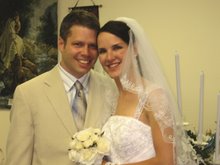Expert: Capt Lou
Date: 1/4/2007
Subject: Shipboard time...
Question
Capt. Lou:
How is shipboard time calculated?
You're always hearing (in movies and TV shows) some naval officer calling an officers meeting at "seven bells"...or some sailor testifying that he was on watch from "two to six bells". And I've just always wondered how "bell time" aboard ship is computed.
Any info you could share is greatly appreciated.
Warm regards,
David Gardner
Get the answer below
Sponsored Links
Brass Ships Bell
Very popular nautical gift for the mariner in your life! Ship's Bells.
www.LandfallNavigation.com
One Stop Nautical Shop.
Ship Wheels, Bells, Lanterns, Maps. Clocks, Portholes, much more.
www.seasidetreasures.com
Chelsea's Ship's Bell
Experts dedicated solely to Chelsea Clocks. Superb customer service.
DemeterAndSons.com
Answer
Going as far back as the days Christopher Columbus sailed to America, a bell was used to sound the time onboard a ship. I am told that time in those days was kept with an hourglass. Every half hour, the timekeeper would ring the bell. It was important for the ship's captain and crew to know the time, so that they could share the duties of sailling the ship. A crew's shift would last 4 hours, so a 24 hour day could have been divided into into six shifts, but in order to have the 6 shifts work different time periods during the day, (so that the same crew didn't work the same time every day, like every night or at dinner time) the work day was divided into 7 time periods for the 6 different crews, with two of the 7 time periods each lasting only two hours. So, what you ended up with was 5 four hour shifts and 2 two hour shifts. The 2 two hour shifts were called the "dog watches" and occurred each day the same time between 6 - 10PM. This way, each of the 6 crews worked a different 4 hour time period each day.
Here is a typical schedule a ship's crew would follow:
Shift 1 - Midnight to 4 AM (0000 - 0400)
Shift 2 - 4 AM to 8 AM (0400 - 0800)
Shift 3 - 8 AM to noon (0800 - 1200)
Shift 4 - Noon to 4 PM (1200 - 1600)
Shift 5 - First Dog Watch 4 PM to 6 PM (1600 - 1800)
Shift 6 - Second Dog Watch 6 PM to 8 PM (1800 - 2000)
Shift 1 - 8 PM to Midnight (2000 - 0000)
Shift 2 - Midnight to 4 AM
(See how each shift would work a different time during the day)
Now, I think you will understand how the bells worked. The bells were struck every half-hour, with a maximum of eight bells. For instance, the first shift starting at midnight would hear the the following bells:
12:30 AM - 1 bell
1:00 AM - 2 bells
1:30 AM - 3 bells
2:00 AM - 4 bells
2:30 AM - 5 bells
3:00 AM - 6 bells
3:30 AM - 7 bells
4:00 AM - 8 bells
At eight bells your watch was over! All other 4 hour watches followed this same procedure except the Dog Watches.
At the end of the First Dog Watch, only four bells were struck. The second Dog Watch bells were rung like the first Dog Watch, starting at 1 bell, but at the end of the second Dog Watch shift, 8 bells were struck.
That was the way it was done right up until 1915. Then a new law was passed and all U.S. Merchant vessels over 100 gross tons had to divide their crews into three shifts, working four hours on and eight hours off. This routine turned the 2 dog watches into 1 evening watch.
OK? I hear 8 bells ringing, so I have to sign off!
Capt Lou
Wednesday, June 4, 2008
Subscribe to:
Post Comments (Atom)


1 comment:
We are a nautical gifts seller. We have a large range of nautical products. we are having e-commerce website.You can visit us to https://www.4thesea.com/ for nautical products and many more......
Post a Comment